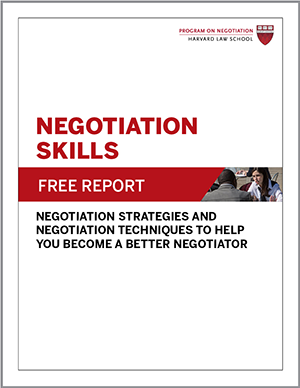
Industry rivals often struggle to engage in negotiation best practices, balancing profit maximization through competition with industry-strengthening cooperative moves. Become overly competitive, and firms risk fostering conflict and constricting innovation. Collaborate in the wrong ways, and they could cut ethical corners or even break the law.
When an industry is struggling, this balance can be especially difficult to maintain, and the benefits of negotiation in business difficult to achieve. As reported by Jonah Engel Bromwich in the New York Times, the U.S. raisin industry offers a failed negotiation case study—followed by a success story of negotiation best practices.
Stealing the Pie
When Harry Overly took the helm of Sun-Maid in 2017 from an industry insider, the $500 million U.S. raisin industry had been in decline for years amid growing competition from other snack foods and foreign raisin producers. A raisin-industry newcomer, Overly arrived in California’s Central Valley eager to explore ways to convince millennials to eat more of the healthy snack.
But when he met with other industry leaders to discuss a mutual gains approach to boosting sales, Overly told the Times, the ideas they came up with were “nothing short of collusion.”
It soon became clear to Overly that California’s compact community of raisin farmers, packers, and executives was ridden with distrust due to decades-old disputes. The California Dancing Raisins, Claymation characters used to promote U.S. raisins in the late 1980s and early 1990s, had been a wildly popular sales booster. But after the head of Sun-Maid restricted his competitors’ use of the characters, the campaign fell apart, and raisin sellers had resisted collaborating on advertising ever since. Industry fault lines grew deeper in 2015 after a Supreme Court decision prompted the end of a longstanding system in which raisin farmers shared the risk of low raisin supply in off years.
“This was not an industry which was interested in figuring out how you grow the size of the pie,” Overly told the Times. “It is one where they figure out how to just steal different slices of the pie from each other.”
Heard it Through the Grapevine
As is common for other U.S. agricultural crops, raisin growers may collectively set industry prices within a range. To try to preserve profits, they responded to shrinking demand for raisins by raising prices.
But to boost sales, Overly believed, Sun-Maid would need to lower the baseline price for raisins. In late 2018, he launched negotiations with Kalem Barserian, the head of the Raisin Bargaining Association (RBA), which represents raisin farmers and raisin producers. The supply of raisins had rebounded from 2017’s heat-damaged crop, and Barserian, a raisin industry veteran, wanted to raise raisins’ base price. Overly objected. “I don’t know [in] what world … supply goes up and price is supposed to go along with it!” he said to the Times.
“The gossip was that Sun-Maid’s new chief executive didn’t want to pay a fair price to farmers,” writes Bromwich. With negotiations at an impasse, Overly pulled Sun-Maid out of the RBA in October—and then faced intimidation, harassing phone calls, and even death threats, he says.
Raisin’ Heck
With industry tensions running high, Overly and Barserian appeared together on a panel at Fresno’s Grape, Nut & Tree Fruit Expo in November. Addressing the crowd of raisin growers, Barserian warned about growing global competition and falling demand for U.S. raisins.
Overly then talked about the need to lower raisin prices sustainably. “We need to spend more time focusing on growing the pie than fighting over our piece of [the] pie within this industry,” he added.
Several growers stood up to offer their support for Overly’s collaborative vision. American Vineyard magazine reported that raisin growers left the meeting “with their blood pumping fast in excitement for the industry to finally get together and trigger some much-needed changes.”
Growers agreed to lower the baseline price for raisins. Tensions began to ease. And Overly gained time and energy to focus on new-product development and marketing.
Raisins in the Sun
Here are three negotiation best practices highlighted by the raisin industry’s breakthrough:
- Reframe the game. Rather than looking at talks with competitors as a value-claiming negotiation, see them as opportunities to grow the pie so that everyone can claim more.
- Bypass unhelpful agents. When Overly couldn’t reach agreement with Barserian, he made his case directly to the farmers the RBA represents. If you believe your counterparts’ representative is not serving them well, try going around him or her.
- Address conflict head-on. Unresolved disputes can taint interactions between parties. Whether through negotiation or mediation, allow parties to get to the root of their grievances.
What other negotiation best practices do you recommend when dealing with industry competitors?





